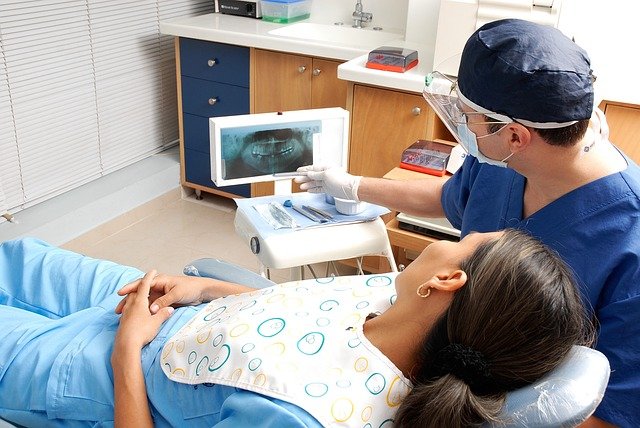Understanding Crohn's Disease: Symptoms, Causes, and What to Expect in 2025
Crohn's disease is a chronic inflammatory bowel disease that affects millions of Americans, causing inflammation anywhere along the digestive tract from mouth to anus. This autoimmune condition can significantly impact daily life through various symptoms and complications. Understanding the disease's progression, treatment options, and what patients can expect moving into 2025 helps individuals make informed decisions about their healthcare journey.

How Crohn’s Disease Affects the Body
Crohn’s disease creates inflammation that extends through the entire thickness of the bowel wall, unlike other inflammatory bowel diseases that only affect surface layers. The inflammation can occur in patches, leaving healthy tissue between affected areas. Common locations include the small intestine, colon, and the area where the small and large intestines connect. The disease can cause complications beyond the digestive system, affecting joints, skin, eyes, and liver. Nutritional deficiencies often develop due to the body’s reduced ability to absorb nutrients from inflamed intestinal segments.
Symptoms of Crohn’s Disease in Females
Women with Crohn’s disease may experience unique symptoms that differ from those typically seen in men. Menstrual irregularities are common, with some women experiencing delayed puberty or fertility challenges. During pregnancy, symptoms may fluctuate, with some women finding relief while others experience flare-ups. Female-specific symptoms include pelvic pain, particularly if the disease affects the rectum or causes fistulas. Iron deficiency anemia occurs more frequently in women due to menstrual blood loss combined with intestinal bleeding. Bone density issues may also develop earlier in women, especially those on long-term corticosteroid treatments.
What to Expect with Active Crohn’s Disease
Active Crohn’s disease presents with a range of symptoms that can vary significantly between individuals. Persistent diarrhea, often containing blood or mucus, ranks among the most common symptoms. Abdominal pain and cramping typically occur, especially after eating. Fatigue becomes overwhelming due to chronic inflammation and nutrient malabsorption. Weight loss happens frequently, even when appetite remains normal. Fever may accompany flare-ups, indicating increased inflammatory activity. Some patients develop mouth sores, skin rashes, or joint pain during active periods. The unpredictable nature of flare-ups means symptoms can appear suddenly and vary in intensity and duration.
What Crohn’s Disease Pictures Can Show
Medical imaging plays a crucial role in diagnosing and monitoring Crohn’s disease progression. Colonoscopy images reveal characteristic “cobblestone” patterns on the intestinal lining, with areas of inflammation separated by normal tissue. CT scans can show bowel wall thickening, strictures, and complications like abscesses or fistulas. MR enterography provides detailed images of the small bowel, helping doctors assess disease extent and severity. Capsule endoscopy captures images throughout the entire small intestine, reaching areas traditional endoscopy cannot access. These visual tools help physicians determine appropriate treatment strategies and monitor response to therapy over time.
Treatment Options for Crohn’s Disease in 2025
Treatment approaches for Crohn’s disease continue evolving with new medications and personalized medicine strategies. Anti-inflammatory drugs like aminosalicylates remain first-line treatments for mild symptoms. Immunosuppressants such as methotrexate and azathioprine help control moderate to severe disease. Biologic therapies targeting specific inflammatory pathways have revolutionized treatment, with newer options providing more targeted approaches. Small molecule drugs offer oral alternatives to injectable biologics. Surgical intervention becomes necessary for complications like strictures, fistulas, or medication-resistant disease. Nutritional therapy and dietary modifications complement medical treatments, with specialized formulas sometimes providing complete nutrition during healing periods.
| Treatment Category | Provider/Manufacturer | Estimated Monthly Cost |
|---|---|---|
| Biologic Therapy | Humira (AbbVie) | $5,000-$6,000 |
| Biologic Therapy | Remicade (Janssen) | $4,500-$7,000 |
| Immunosuppressant | Methotrexate (Generic) | $20-$50 |
| Anti-inflammatory | Mesalamine (Generic) | $200-$400 |
| Small Molecule | Xeljanz (Pfizer) | $4,000-$5,000 |
Prices, rates, or cost estimates mentioned in this article are based on the latest available information but may change over time. Independent research is advised before making financial decisions.
The landscape of Crohn’s disease management continues advancing with precision medicine approaches that consider individual genetic profiles and disease characteristics. Researchers are developing new therapeutic targets and exploring the role of the microbiome in disease progression. Telemedicine has expanded access to specialist care, particularly beneficial for patients in rural areas or during flare-ups that limit mobility. Clinical trials offer access to cutting-edge treatments before they become widely available.
Living with Crohn’s disease requires ongoing medical supervision and lifestyle adjustments, but many patients achieve and maintain remission with appropriate treatment. Support groups and patient education programs provide valuable resources for managing the emotional and practical challenges of chronic illness. As treatment options expand and become more personalized, the outlook for individuals with Crohn’s disease continues improving, offering hope for better quality of life and long-term health outcomes.
This article is for informational purposes only and should not be considered medical advice. Please consult a qualified healthcare professional for personalized guidance and treatment.




